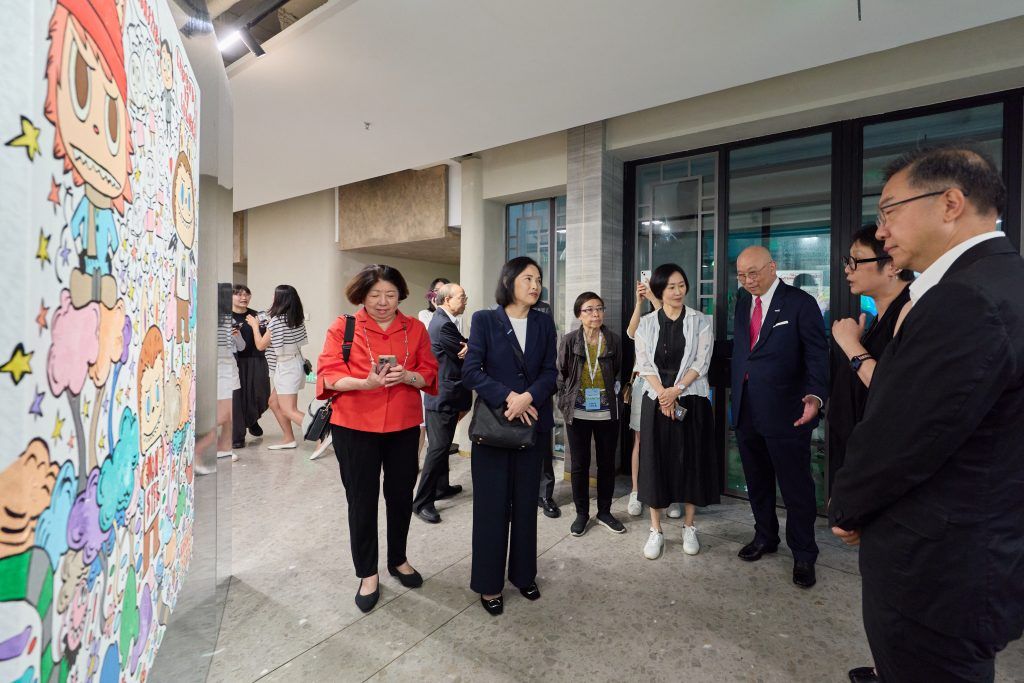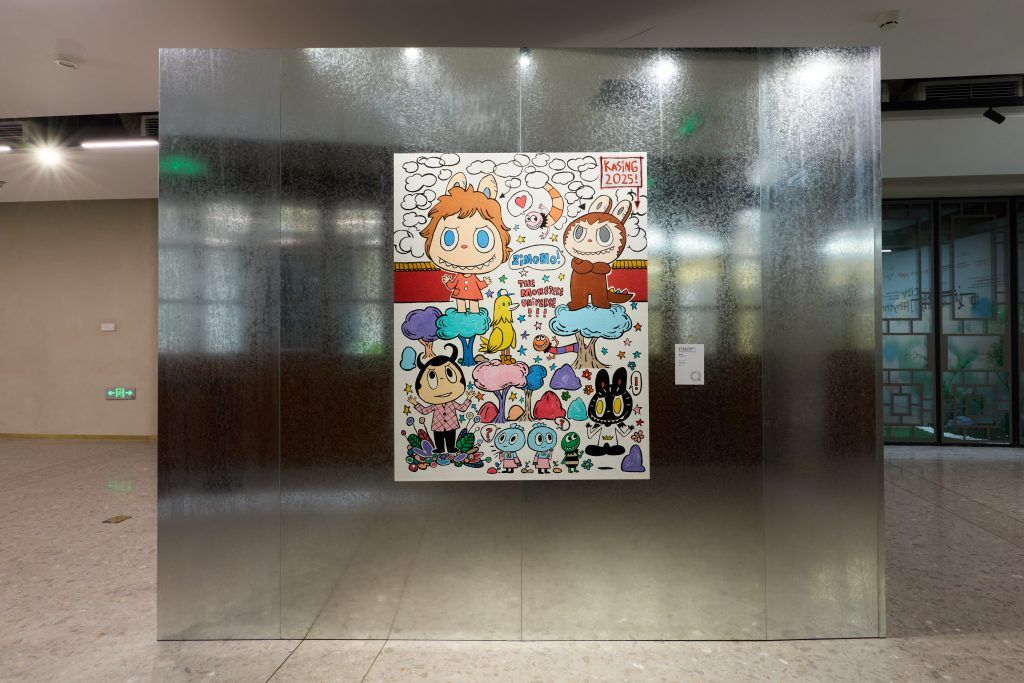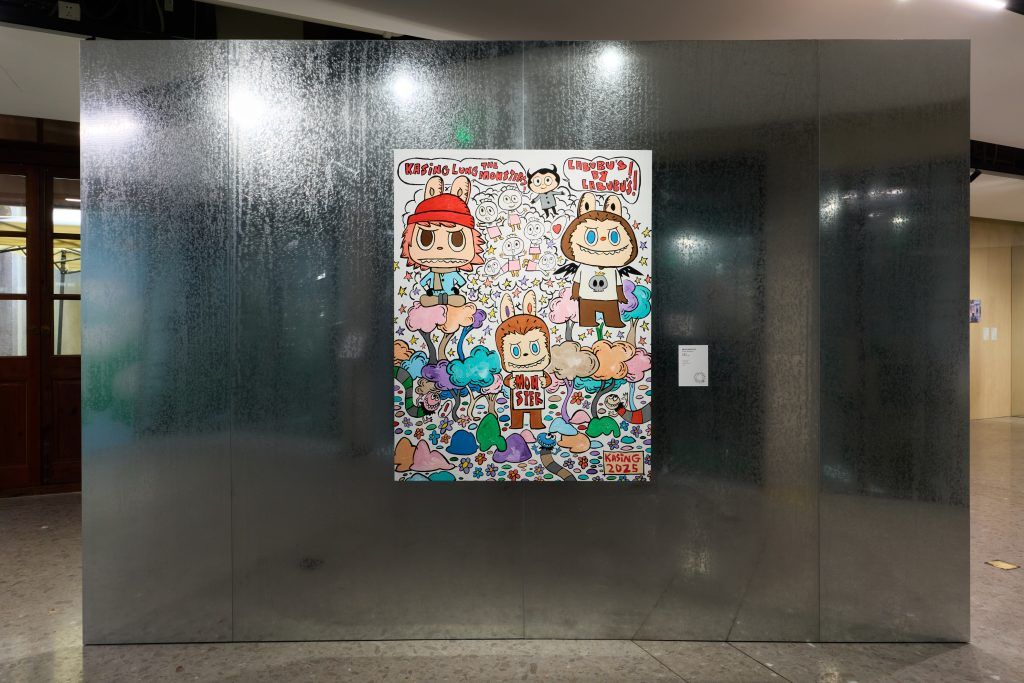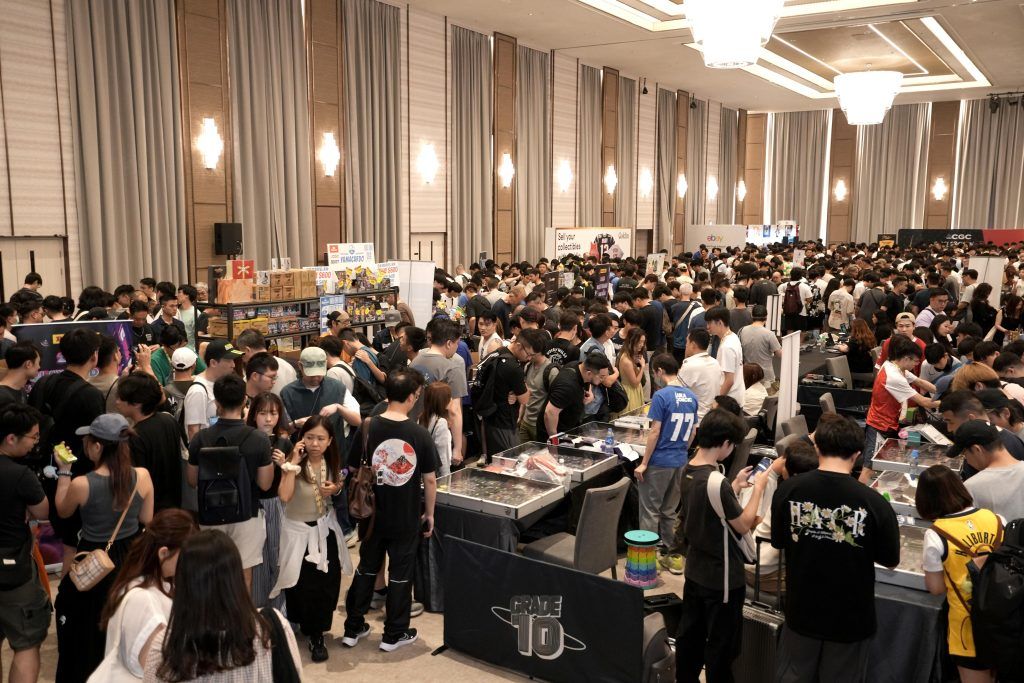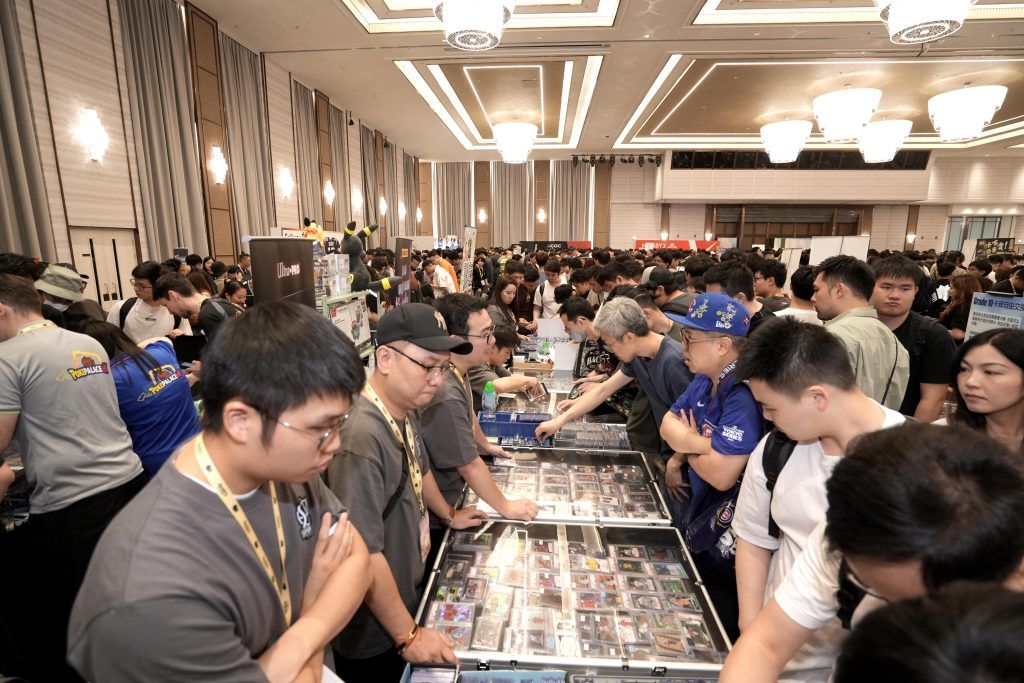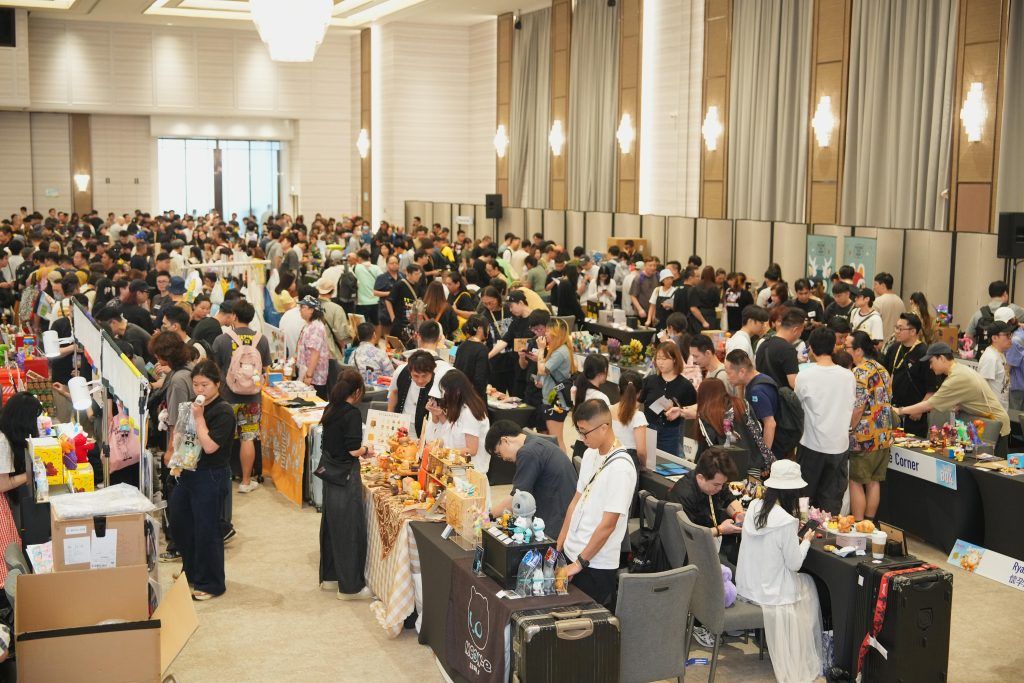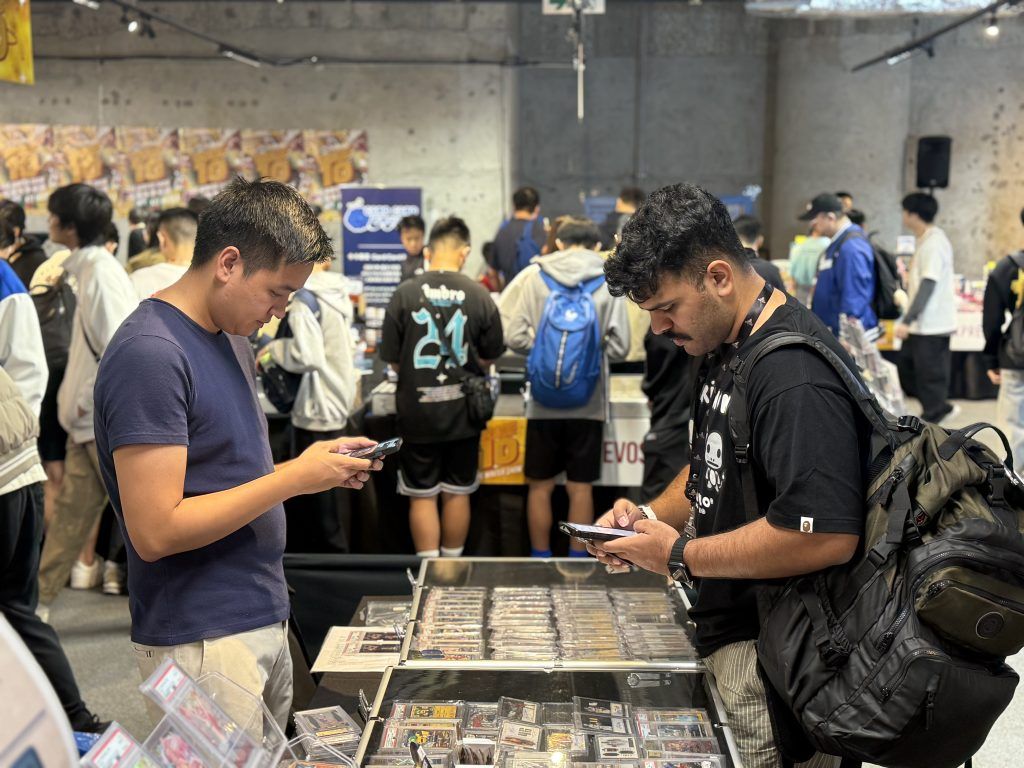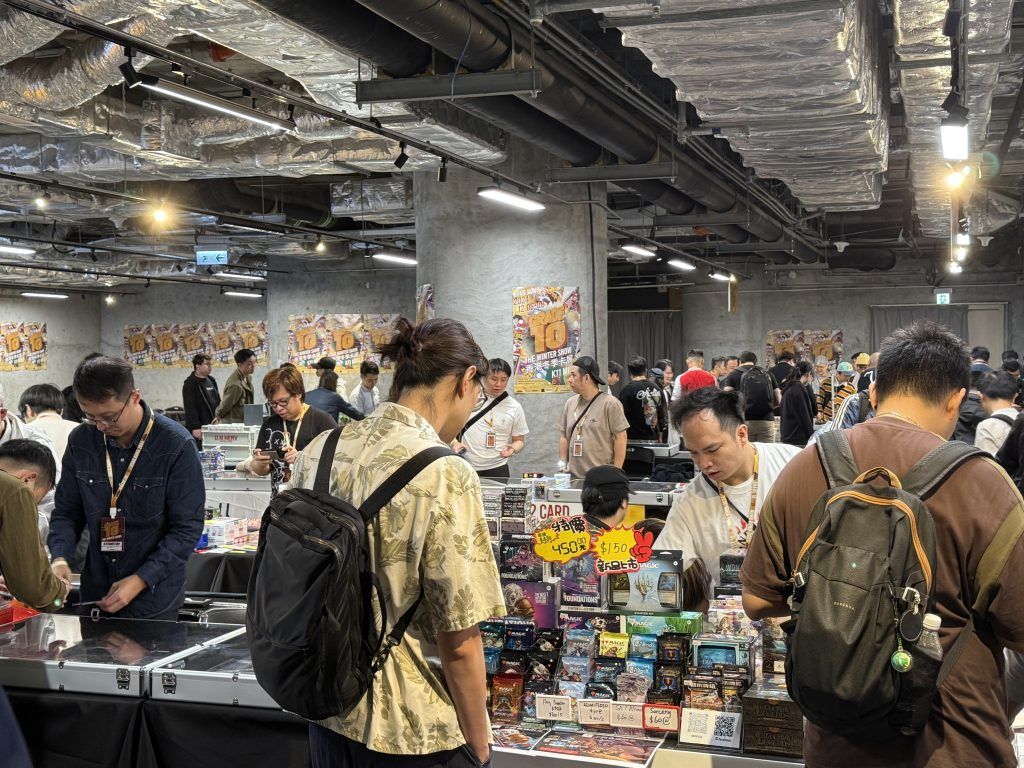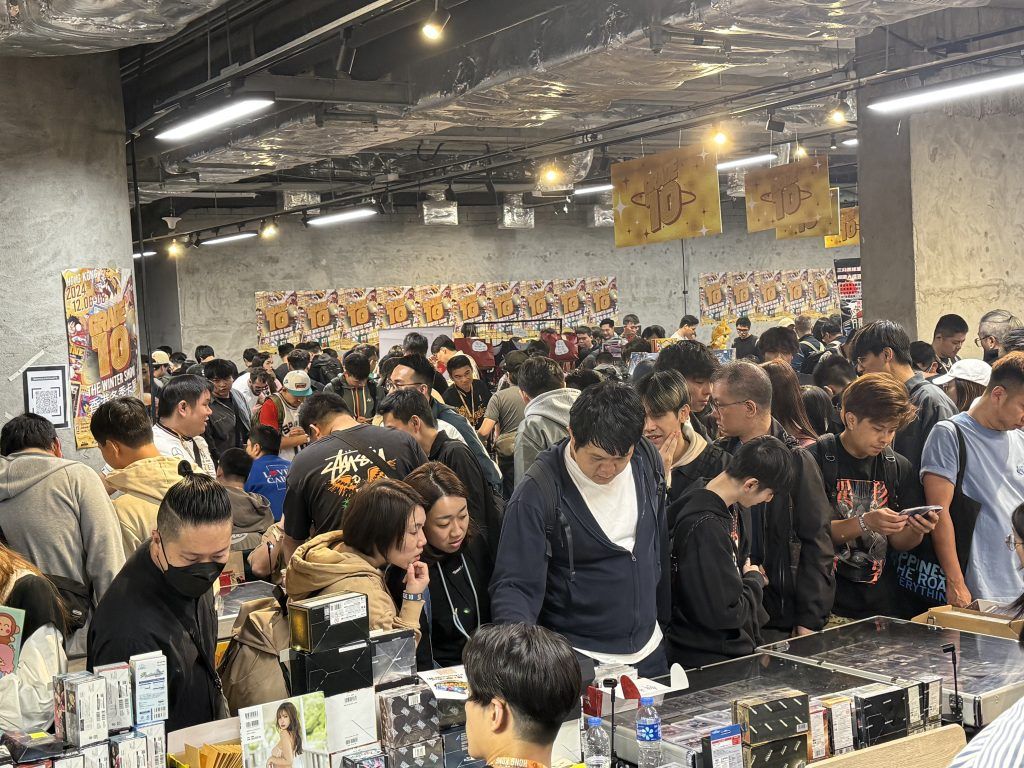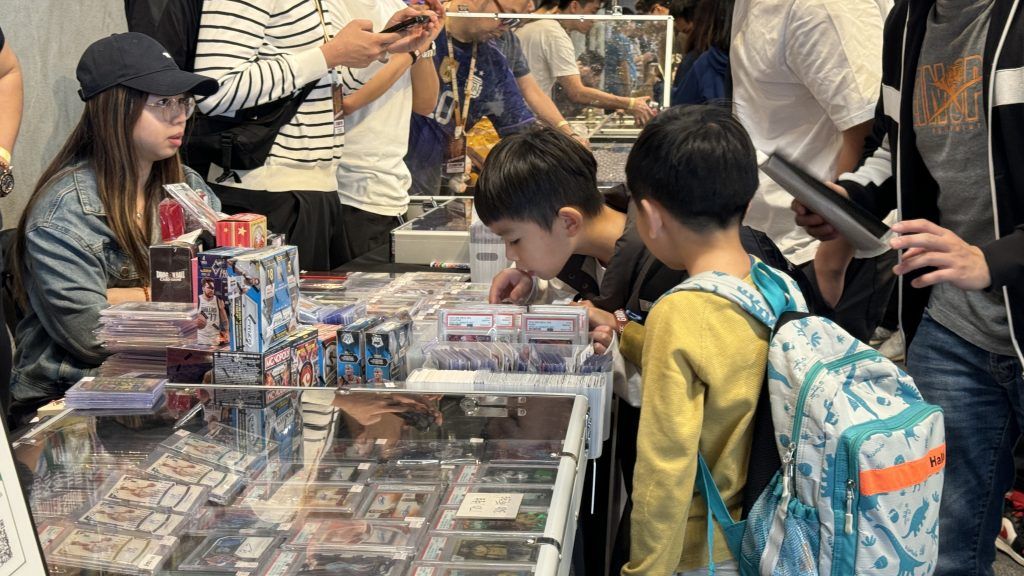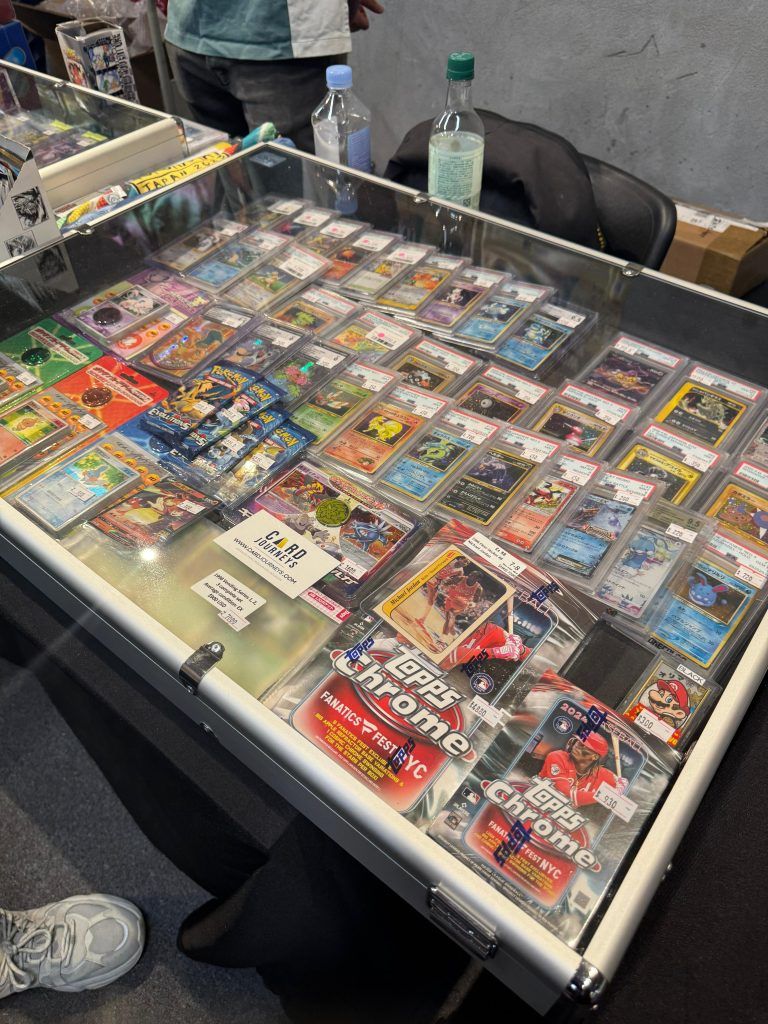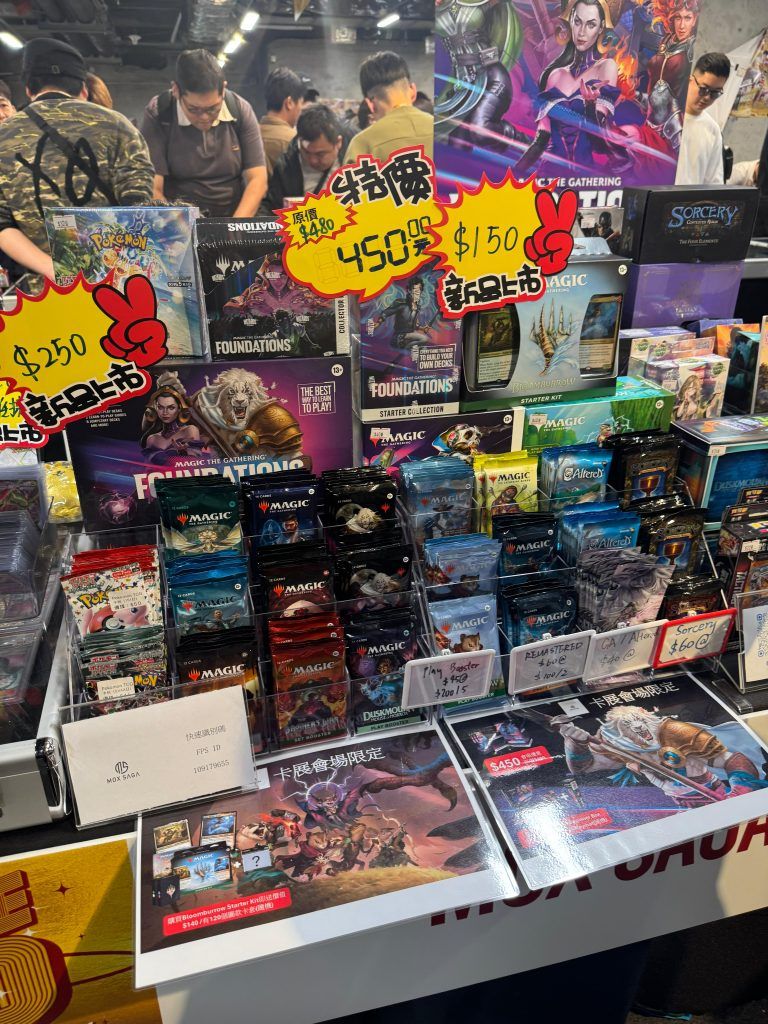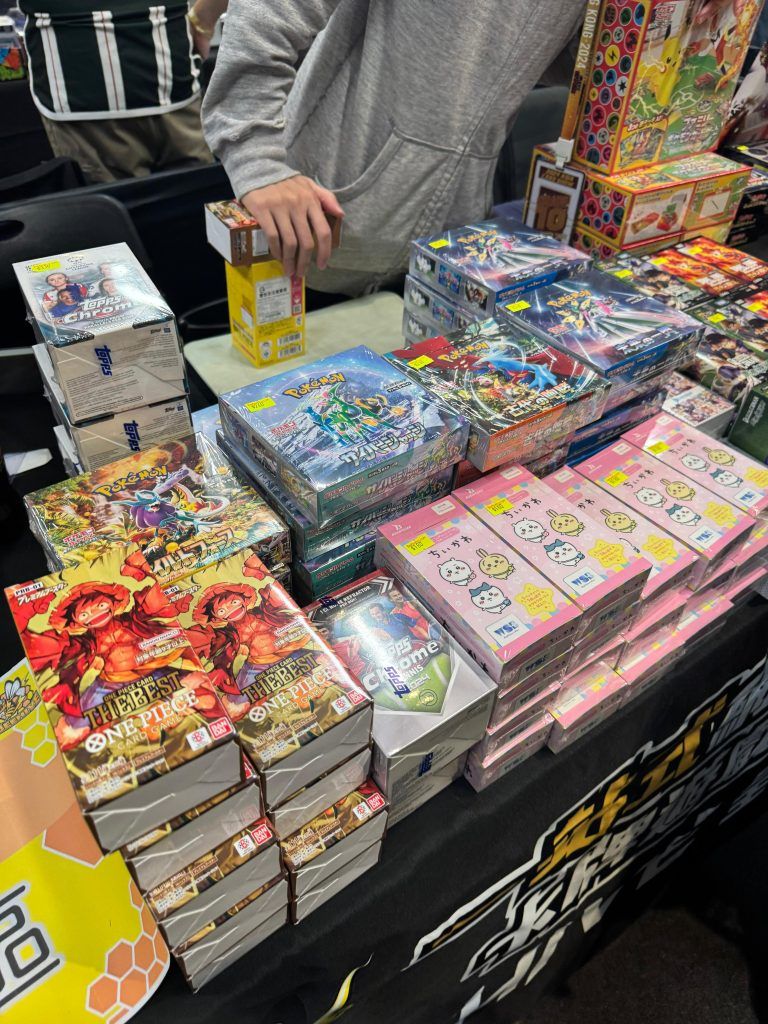You might love it, or you might hate it – but either way, you’ve almost certainly heard of Labubu by now. With its unmistakable fuzzy body, gleaming eyes, and serrated grin, the mischievous elf-like character has become more than just a collectible – it’s a symbol of cross-cultural fandom, new-wave consumer behaviour, and the evolving intersection between fashion, entertainment, and lifestyle commodities.
From being treated like pets on TikTok – given face masks and cradled like infants – to dangling from luxury handbags in airports, on red carpets and beyond, Labubu has quietly but forcefully entered the cultural lexicon. Celebrities like Dua Lipa, Rihanna, Simone Biles, and Hilary Duff have flaunted their figurines; Kim Kardashian has posted them on Instagram. In June 2025, a rare, first-generation Labubu sold for a staggering US$150,000 at Yongle International Auction House in Beijing. Not bad for a character first imagined by an illustrator with a love of folklore.
But Labubu isn’t just a moment of hype – it’s the blueprint of a new ecosystem. Like Pokémon in the 90s, Be@rbricks in the 2010s, or even Bored Apes in the crypto bubble, Labubu has tapped into a uniquely millennial and Gen Z fascination with physical collectibles that straddle nostalgia, novelty, and investment. And unlike NFTs, Labubu is tangible, photographable, and, crucially, portable – making it a prime candidate for lifestyle integration and future fashion collaborations.
The Origins of Labubu – and the Man Behind the Myth

To understand Labubu’s rise, one must look to its creator. Kasing Lung, a Hong Kong-born illustrator who relocated to the Netherlands at age seven, found artistic inspiration in Nordic fairy tales. His characters – including Labubu, Zimomo and Tycoco – emerged from a whimsical, at times eerie universe detailed in his 2015 book The Monsters. Described by its official retailer as “kind-hearted and always want to help, but often accidentally achieves the opposite,” Labubu’s charm lies in its contradictory persona: both sweet and sinister, cute and chaotic.
“My work focuses primarily on a series of elf characters, including Labubu, Zimomo, and Tycoco,” Kasing Lung, Labubu’s creator, tells BurdaLuxury. “In addition to painting and creating illustrated storybooks, I continue to explore various forms of artistic expression, such as three-dimensional works.”
While Lung had previously collaborated with niche vinyl toy companies such as How2Work, the character catapulted into the mainstream in 2019 following a collaboration with Beijing-based toy conglomerate Pop Mart, the pioneer behind China’s booming blind box economy.
The Blind Box Boom: A Billion-Dollar Market
The collaboration with Pop Mart was transformative. “Blind boxes” – sealed packages containing one of several possible figures – thrive on suspense, collectibility, and gamification. In 2020, Pop Mart went public on the Hong Kong Stock Exchange, raising over US$676 million in its IPO, according to Reuters. It saw its revenue jump from RMB 1.68 billion in 2019 to RMB 13.04 billion by 2024, according to the company’s financial reports, compiled by MoonFox Research Institute. In this climate, Labubu didn’t just survive – it exploded.
What truly pushed Labubu into global consciousness was the endorsement of Blackpink’s Lisa, who began posting her collection of the creatures on Instagram in April 2024. That single act sparked a domino effect, with fans clamouring to replicate her style, and Labubu became the new “It” accessory, attached to Louis Vuitton bags, Chanel clutches, and Hermès Kellys. In a digital-first world where celebrity influence is currency, Lisa’s subtle nod turbocharged Labubu’s cool factor – and its collectibility.
But what signals that a toy like Labubu has truly transcended novelty and entered “serious collector” territory?
According to Ada Tsui, Head of Evening Sale, 20th/21st Century Art, Christie’s Asia Pacific, the answer lies in both emotional resonance and cultural relevance. “There must be a growing awareness of community-driven collecting – when collecting becomes deeply social and intertwined with community-building; serious collectibles have their own ecosystems, attributing mainly to the strength of the fanbase, creative engagement and sense of belonging around the toy,” she told BurdaLuxury.
She notes that cultural relevance and mass appeal, driven by pop culture, generational preferences, and subcultural movements, are key factors that elevate a trend into iconic status.
Cultural Legitimacy at the Museum
Labubu’s transformation from niche toy to cultural icon was cemented by its inclusion in the “City Rhythms: Chinese Traditional Culture Reinterpreted” exhibition at Zhangyuan, Shanghai, presented by the Hong Kong Palace Museum during WestK Shanghai Week 2025. The show, which features 16 Hong Kong artists, marked the first time in years that Kasing Lung displayed his paintings publicly.
“The two pieces exhibited in Shanghai build on my signature elf character theme while incorporating aesthetic elements inspired by traditional Chinese gardens,” Kasing Lung told us. “It has been many years since my paintings were last exhibited, and I hope this exhibition will introduce my creations to a wider audience and showcase my latest artistic explorations.”
Guest curator Grace Cheng added in an interview with BurdaLuxury: “We had already been speaking with a few different artists, and it just so happened that Labubu suddenly became very famous in that moment. I didn’t expect that level of popularity, but it worked out well.”
Interestingly, Cheng notes that most exhibition visitors weren’t children but adults who already knew the character, some carrying multiple Labubu figures on their designer handbags. “His work became a great backdrop for social media moments,” she said.
Dr. Louis Ng, Museum Director at HKPM, contextualised Labubu’s significance, telling BurdaLuxury: “By featuring works like Kasing Lung’s, we highlight how contemporary artists reinterpret traditional culture, making them relevant and accessible to younger audiences. While Labubu naturally draws attention due to its global popularity, I invite audiences to also explore the unique creativity and innovative works that our Hong Kong artists offer across various disciplines.”
The Collector Shift: From Blue-Chip to Pop Culture
Labubu’s rise is not occurring in a vacuum – it’s reflective of a broader generational shift in collecting culture.
“It reveals a generational shift in the values and aesthetics of collection building,” says Tsui. “However, Millennials and Gen Z aren’t rejecting traditional art. They’re reimagining what collecting means in a world shaped by hybridity, identity, and lived experience.”
Tsui outlines four key dynamics shaping the generational shift in collecting: Millennial and Gen Z collectors prioritise cultural relevance over traditional canonical status, seeking pieces that reflect their personal values, lived identities, and contemporary culture. They embrace diversity in their collections, curating through multiplicity which reflects a broader worldview and openness to varied forms of expression. Their connoisseurship is rooted in passion, as they focus less on institutional frameworks or art historical significance and more on emotional resonance. Furthermore, collecting is experience-led for this generation – they engage dynamically and participatively with art through pop-ups, drops, or digital reveals, blurring the lines between viewer and owner, fan and curator. Notably, Christie’s also sold a work by Kasing Lung in Hong Kong in March that performed very well and exceeded estimates.
The Trading Card Tipping Point
In June, Amazing Toy Show and GRADE 10 Card Show teamed up in Hong Kong for the first time, uniting global brands, artists, and influencers to showcase the evolving world of collectibles.
Co-organised by toy hub Amaz by Lokianno and GRADE 10, the two-day event offered four collectible ticket sets: A & B included admission plus an exclusive designer figure, C featured admission with a limited-edition collectible card, and D was general admission.
A standout was Set C’s exclusive collaboration with Labubu’s Lung, who created the limited-edition “The Monsters Series Promo 13” card, sparking high demand among collectors.
“Every year, Amazing Toy Show collaborates with different partners to design limited-edition tickets, each highly sought after by designer toy enthusiasts. This year, we joined hands with toy designers from Hong Kong, Mainland China, Taiwan, Japan, South Korea, and Thailand, aiming to foster greater connection and interaction among toy lovers across the region,” the organisers of Amazing Toy Show/Amaz by Lokianno told BurdaLuxury. “Notably, we invited Kasing Lung, Takuma Fujisaki, and Jeffrey Lam (Big Fai) to co-design this year’s ticket, resulting in a rich and diverse collaboration that reflects the spirit of creative synergy.”
“We believe that the popularity of a card doesn’t solely depend on whether it’s linked to a particular IP or toy character,” GRADE 10 organisers told BurdaLuxury. “What matters more is the character’s own appeal and whether it is supported by a well-developed ecosystem. Take Pokémon, for example. Its enduring popularity stems from its multi-platform integration, physical card battles, mobile games, and other extensions, which together form a mature and sustainable ecosystem.”
While cards featuring toy elements can ignite curiosity and draw new collectors, boosting the card market’s momentum, long-term growth depends on building a complete ecosystem. Without this foundation, any hype is likely to be short-lived.
“From a long-term perspective, Sports Cards and TCG (Trading Card Game) Cards tend to offer a more sustainable and stable market performance. The card collecting culture in Asia continues to thrive, with a clear upward trend,” said the Grade 10 spokesperson. “Recently, TCG cards have seen strong growth, while sports cards remain a steady force. Among them, TCG cards stand out due to their low entry barrier and broad participant base, making them especially promising for future development as they gradually expand into a more mainstream audience.”
Fashion and the Future
While Labubu has yet to release an official fashion collection, the groundwork is already laid. Yushan Li and Zhou Jun’s brand Pronounce was the first to present a capsule using Labubu graphics at Milan Men’s Fashion Week in January 2024. Japanese brand Sacai, known for its avant-street style, also created a bespoke Labubu figure. In January 2025, a Coca-Cola x Labubu collection dropped, further embedding the character into the everyday lifestyle arena.
With fashion houses increasingly vying for youth culture relevance, the potential for Labubu to join the ranks of Hello Kitty, Takashi Murakami’s flowers, or even BAPE’s Baby Milo is not far-fetched. The formula is ripe: global fandom, celebrity endorsement, museum validation, and an ever-growing resale market.
And yet, while hype is a powerful currency, longevity depends on infrastructure.
BurdaLuxury’s Lens: What This Means for Fashion Collaborations
Labubu’s rise is not just a case study in viral successes – it’s a template for what next-gen fashion collaborations could look like. Unlike traditional IP licensing models, where brands retrofit popular characters into product lines, Labubu’s entry point comes from fandom-first design and cultural fluency. Its appeal is both niche and broad, cool and commercial, East and West.
As the luxury sector seeks ways to tap into Gen Z’s loyalty – and their wallets – characters like Labubu offer an authentic, organic way in. Until then, Labubu hands on the arms of the fashion crowd, waiting for its couture moment.
Featured Image Courtesy of Christie’s


